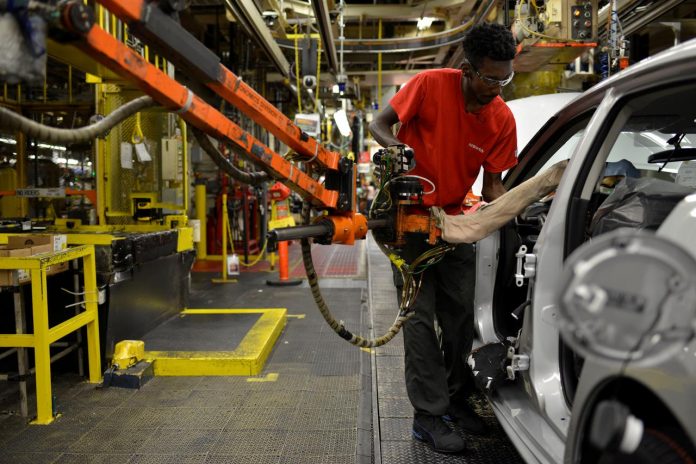WASHINGTON: New orders for US-made goods fell in April and shipments dropped by the most in two years, indicating continued weakness in manufacturing activity that could undercut the broader economy.
Factory goods orders declined 0.8pc, pulled down by soft demand for transportation equipment, computers and electronic orders, and primary metals, the Commerce Department said on Tuesday. Data for March was revised down to show factory orders increasing 1.3pc instead of surging 1.9pc as previously reported.
Economists polled by Reuters had forecast factory orders would fall -0.9pc in April. Factory orders rose 1.6pc compared to April 2018. Manufacturing, which accounts for about 12pc of the economy, is being squeezed by businesses placing fewer orders while working off stockpiles of unsold goods in warehouses.
The inventory bloat is concentrated in the automotive sector, which is experiencing weaker sales. Inventories at factories rose 0.3pc. The stock of unsold goods has increased in seven of the last eight months.
Shipments of manufactured goods fell 0.5pc in April, the largest drop since April 2017, after rising 0.2pc in March. The inventories-to-shipments ratio increased to 1.37 from 1.36 in March.
Boeing’s move to cut production of its troubled 737 MAX aircraft is also hurting manufacturing.
The sector could see more disruptions to the supply chain after President Donald Trump announced last week that he would impose a tariff on all goods from Mexico in a bid to stem the tide of illegal immigration across the US-Mexican border, starting at 5pc on June 10.
The United States is already waging a trade war with China.
The weak factory orders data was flagged by a report last month showing a drop in demand for long-lasting manufactured goods in April, as well as a drop in manufacturing production.
BROAD WEAKNESS
A survey on Monday showed a measure of national factory activity dropped to a 31-month low in May, with manufacturers expressing concern over the U.S.-China trade tensions. Pointing to further weakness in manufacturing activity, unfilled orders at factories slipped 0.1pc in April, reversing March’s 0.1pc rise.
The data joined moderate consumer spending, as well as weak home sales and construction, outlays in April in suggesting that economic growth was slowing sharply after a temporary boost from trade inventories and defence spending in the first quarter.
The Atlanta Federal Reserve is forecasting GDP rising at a 1.3pc annualized rate in the second quarter. The economy grew at a 3.1pc rate in the January-March period.
Some economists believe the raft of weak data could force the Federal Reserve to cut interest rates this year. The US central bank early this year suspended its three-year rate hiking campaign.
US stock indexes were trading higher after comments by Fed officials, including Chairman Jerome Powell, boosted hopes of a rate cut. Prices of US Treasuries were lower while the dollar edged up against a basket of currencies. Orders for computers and electronic products fell 0.5pc, while those for primary metals dropped 1.1pc. Machinery orders rose 0.3pc after dropping 2.0pc in March. Orders for electrical equipment, appliances and components increased 0.9pc.
Transportation equipment orders tumbled 5.9pc in April after rising 6.0pc in the prior month. Orders for civilian aircraft and parts plunged 25.2pc. Motor vehicles and parts orders fell 1.7pc, the biggest drop since July 2017.
The Commerce Department also said April orders for non-defence capital goods excluding aircraft, which are seen as a measure of business spending plans on equipment, declined 1.0pc instead of the 0.9pc drop reported last month.
Orders for these so-called core capital goods rose 0.3pc in March. Shipments of core capital goods, which are used to calculate business equipment spending in the gross domestic product report, were unchanged as previously reported.
Core capital goods shipments fell 0.6pc in March. Business spending on equipment contracted in the first quarter for the first time in three years.
























